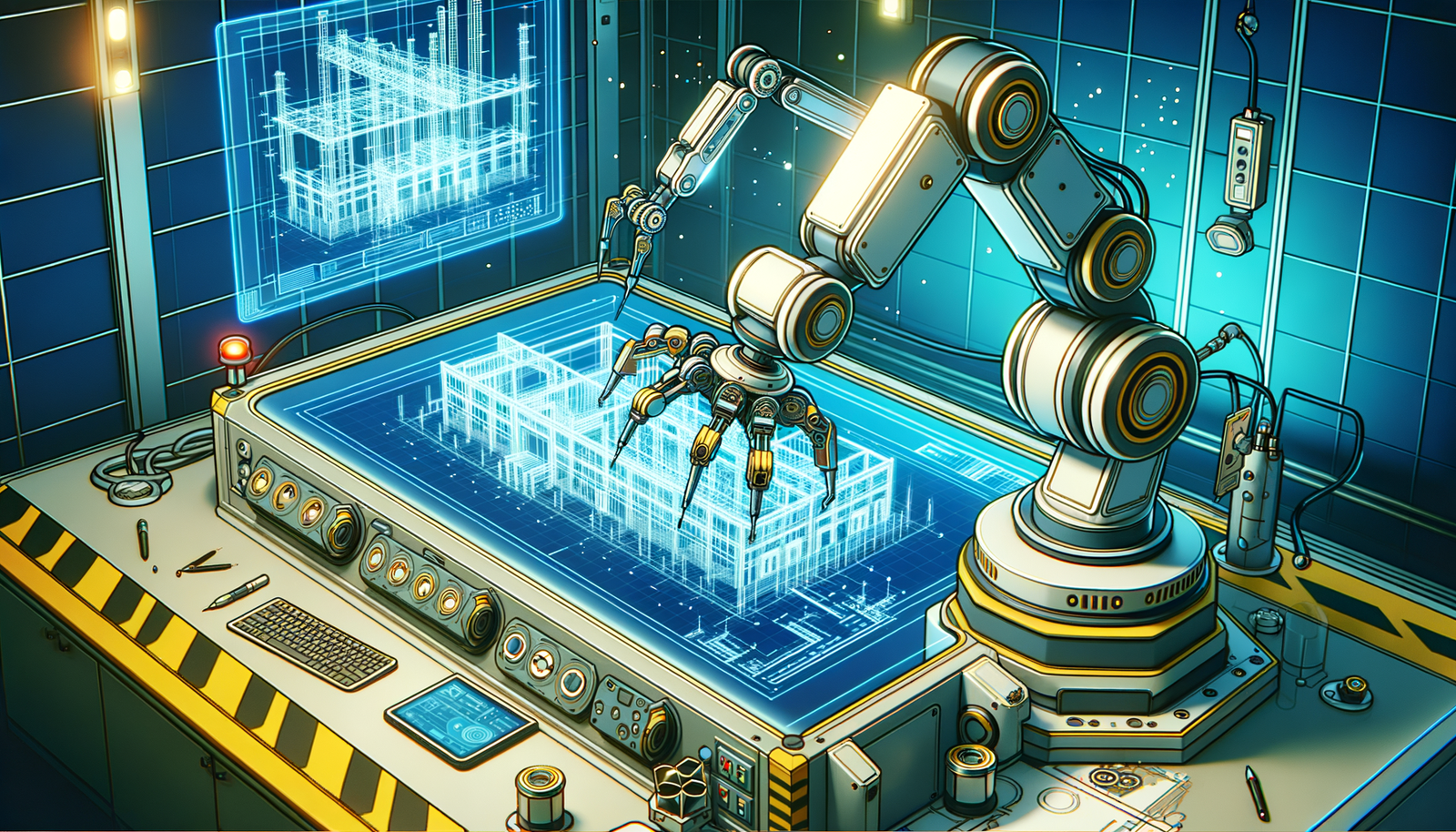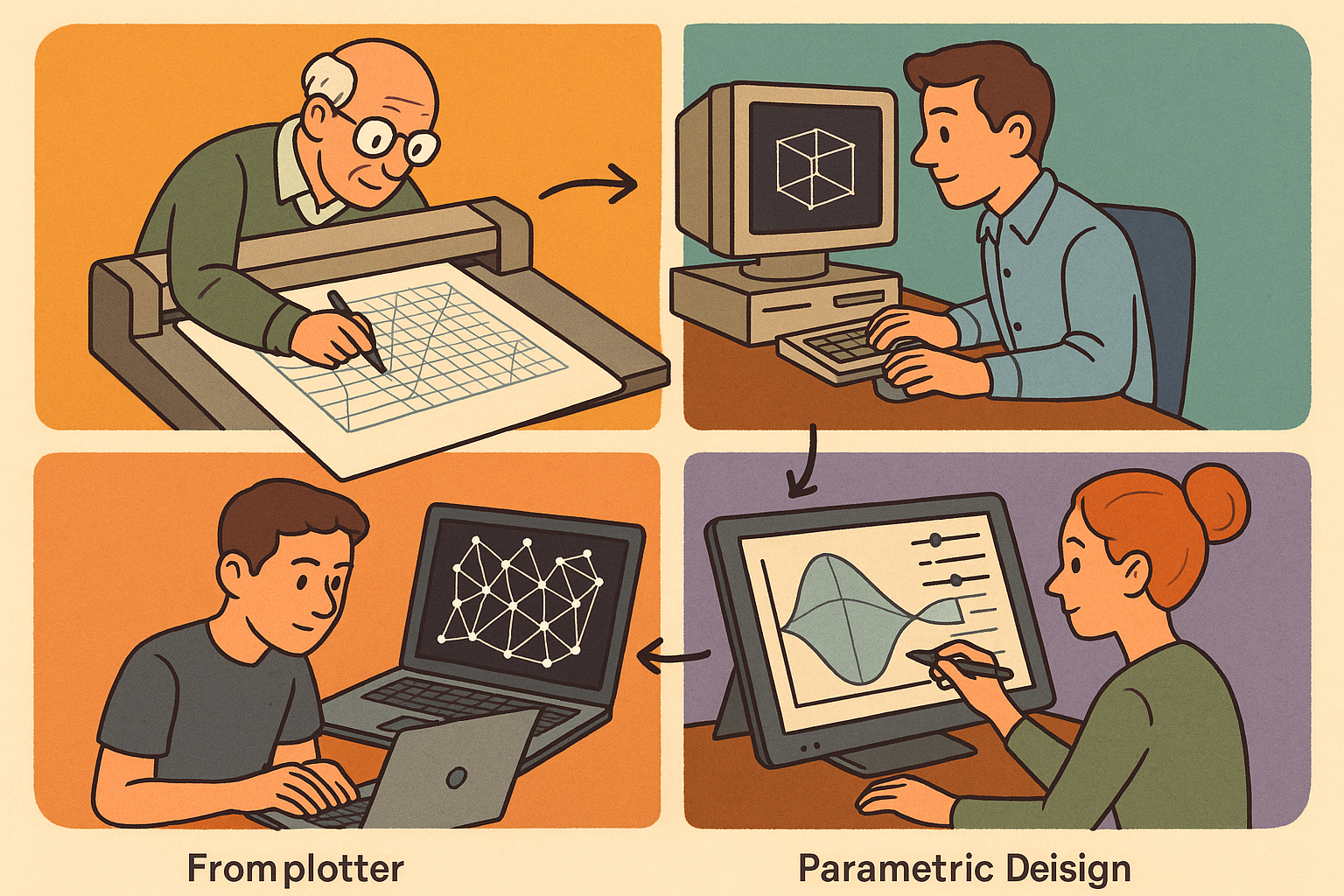Your Cart is Empty
Customer Testimonials
-
"Great customer service. The folks at Novedge were super helpful in navigating a somewhat complicated order including software upgrades and serial numbers in various stages of inactivity. They were friendly and helpful throughout the process.."
Ruben Ruckmark
"Quick & very helpful. We have been using Novedge for years and are very happy with their quick service when we need to make a purchase and excellent support resolving any issues."
Will Woodson
"Scott is the best. He reminds me about subscriptions dates, guides me in the correct direction for updates. He always responds promptly to me. He is literally the reason I continue to work with Novedge and will do so in the future."
Edward Mchugh
"Calvin Lok is “the man”. After my purchase of Sketchup 2021, he called me and provided step-by-step instructions to ease me through difficulties I was having with the setup of my new software."
Mike Borzage
Harnessing Automation for Enhanced Efficiency in CAD Drafting
November 10, 2024 6 min read


In the realm of computer-aided design (CAD) drafting, time efficiency is not just a luxury—it's a necessity. As projects become more complex and deadlines tighter, the ability to produce high-quality designs in less time is a competitive advantage. Automation tools have emerged as a pivotal solution, revolutionizing traditional design workflows by streamlining repetitive tasks and reducing the potential for human error. This exploration delves into the various automation tools available in CAD drafting, the multitude of benefits they offer, and practical guidance on integrating them into your workflow for maximum efficiency.
Types of Automation Tools in CAD Drafting
Automation tools in CAD drafting come in various forms, each designed to tackle specific challenges and enhance different aspects of the drafting process. Understanding these tools and how they can be applied is essential for any designer looking to optimize their workflow and outputs.
Script-Based Automation
Script-based automation is a powerful method for automating tasks within CAD software through the use of scripting languages such as AutoLISP for AutoCAD or Python for various CAD platforms. These scripts can be tailored to perform a wide array of functions, from simple commands to complex sequences that would otherwise consume significant amounts of time if done manually. For instance, repetitive tasks like drawing annotations, updating title blocks, or managing layer properties can be automated to execute with a single command or trigger. By using scripts, designers can create custom solutions that cater specifically to their workflow needs, thereby enhancing efficiency and consistency across projects. Moreover, script-based automation allows for the creation of user-defined functions that can handle complex calculations, automate data extraction, and interact with external databases, further expanding the capabilities of standard CAD tools.
Macros and Shortcuts
Macros and shortcuts are another category of automation tools that significantly improve productivity in CAD drafting. Macros are sequences of commands or actions that can be recorded and played back to automate repetitive tasks. Within CAD software, macros can automate processes such as formatting text, applying specific styles, or executing a series of drawing commands. The use of keyboard shortcuts and customizable toolbars enhances this efficiency by allowing designers to access frequent commands quickly without navigating through multiple menus. By customizing these shortcuts, users can tailor the CAD environment to their specific workflow preferences, reducing the time spent on command selection and execution. The benefits of implementing macros and shortcuts include not only time savings but also increased accuracy, as the automated sequences reduce the likelihood of errors that can occur with manual input.
AI-Powered Automation
Artificial Intelligence (AI) is making significant inroads into the realm of CAD drafting through AI-powered automation tools. These tools leverage machine learning algorithms to offer features such as predictive text, design suggestions, and pattern recognition. For example, AI can analyze existing design patterns to suggest components or assemblies that fit within the current project context, thereby expediting the design process. AI-powered tools can also predict the next steps in a design sequence based on previous actions, providing intelligent prompts that streamline workflow. Additionally, AI can assist in error detection by recognizing inconsistencies or potential issues within a design before they become problematic. The integration of AI into CAD drafting heralds a new era of efficiency, where the software actively contributes to the design process rather than serving solely as a passive tool.
Benefits of Automation in Drafting
The implementation of automation tools in CAD drafting offers numerous benefits that extend beyond mere time savings. These advantages can have a profound impact on productivity, accuracy, and collaboration within design teams, ultimately contributing to the success and competitiveness of a firm.
Increased Productivity
One of the most significant benefits of automation in drafting is the substantial increase in productivity. By reducing the time spent on repetitive and mundane tasks, designers can focus more on creative and complex aspects of projects. Automation tools streamline processes such as generating standard components, applying consistent formatting, and managing documentation. Firms that have adopted automation tools often report measurable improvements in productivity metrics. For instance, automated layer management and annotation can cut down drafting time by significant margins, allowing for faster project turnaround. The cumulative effect of these time savings can lead to a considerable boost in the number of projects handled and completed within a given timeframe, directly impacting the firm's bottom line.
Error Reduction
Automation plays a crucial role in minimizing human error in CAD drafting. Manual drafting tasks are susceptible to mistakes due to the repetitive nature of the work and fatigue. Automation tools reduce these risks by performing tasks consistently and accurately every time. Features such as error-checking algorithms, automatic dimensioning, and adherence to design standards help ensure that the drawings meet the necessary specifications without oversight. For example, automated validation tools can check for compliance with industry standards or project-specific guidelines, highlighting discrepancies that might otherwise be missed. By reducing errors, firms not only save time and resources on revisions but also enhance the overall quality of their deliverables.
Enhanced Collaboration
Automation tools also enhance collaboration among design teams through the standardization of processes and outputs. By automating certain tasks, team members can work more cohesively, ensuring that everyone's outputs align with the same standards and conventions. Tools that support real-time collaborative drafting efforts enable multiple users to work on the same project simultaneously, with changes updated instantly for all participants. This level of collaboration is facilitated by automation features that synchronize changes, manage version control, and maintain a unified design environment. Enhanced collaboration leads to better communication, reduced conflicts, and a more efficient workflow among team members.
Implementing Automation Tools in Your Workflow
Successfully integrating automation tools into your CAD drafting workflow requires careful planning and execution. It involves assessing your current processes, selecting the right tools, training your team, and adopting best practices to maximize the benefits of automation.
Assessing Needs and Choosing Tools
The first step in implementing automation is to assess the specific needs of your drafting processes. This involves identifying bottlenecks and repetitive tasks that consume significant time and resources. By mapping out your workflow, you can pinpoint areas where automation would have the most impact. Once the needs are identified, the next step is to select appropriate automation tools that align with your project requirements and existing software infrastructure. Consider factors such as compatibility with your current CAD software, the complexity of tasks you wish to automate, and the scalability of the tool for future projects. It's important to choose tools that are user-friendly and offer support and resources to facilitate smooth integration.
Training and Adaptation
Training your staff on new automation tools is crucial for a successful transition. Without proper training, the potential benefits of automation might not be fully realized, and productivity could suffer during the adaptation period. Invest in comprehensive training programs that cover not only the technical aspects of the tools but also best practices for their use. Encourage a culture of continuous learning and provide resources such as tutorials, workshops, and support forums. To transition to an automated workflow without losing productivity, consider a phased implementation. Start by automating simpler tasks and gradually introduce more complex automation as the team becomes comfortable with the tools. Regular feedback sessions can help address any challenges promptly and adjust the implementation strategy as needed.
Best Practices
Maximizing the benefits of automation tools involves adhering to best practices that enhance efficiency and maintain quality. Here are some tips to consider:
- Standardization: Develop and maintain standardized templates and libraries to ensure consistency across all projects.
- Documentation: Keep detailed documentation of all automation scripts, macros, and processes to facilitate maintenance and updates.
- Regular Updates: Stay up-to-date with the latest versions of automation tools and software to leverage new features and security enhancements.
- User Feedback: Encourage team members to provide feedback on automation tools and processes to identify areas for improvement.
- Quality Control: Implement quality control checks to verify that automated tasks meet the required standards and specifications.
By following these best practices, firms can effectively integrate automation into their drafting processes and achieve sustained improvements in productivity and quality.
Conclusion
Automation tools are transforming the landscape of CAD drafting by introducing efficiencies that were previously unattainable. They enable designers to focus on the creative and complex aspects of their work by offloading repetitive tasks to reliable software solutions. As automation technology continues to evolve, it promises even greater enhancements to productivity and design capabilities. The future of CAD drafting is undoubtedly intertwined with automation, and designers who embrace these tools stand to gain a significant competitive advantage. It's an opportune time for professionals in the field to explore and adopt automation, unlocking new levels of efficiency and innovation in their projects.
Also in Design News

Design Software History: From Plotters to Procedural Intent: A Technical History of Generative and Parametric Design Software
January 04, 2026 13 min read
Read More
Semantic Meshes: Enabling Analytics-Ready Geometry for Digital Twins
January 04, 2026 12 min read
Read MoreSubscribe
Sign up to get the latest on sales, new releases and more …



